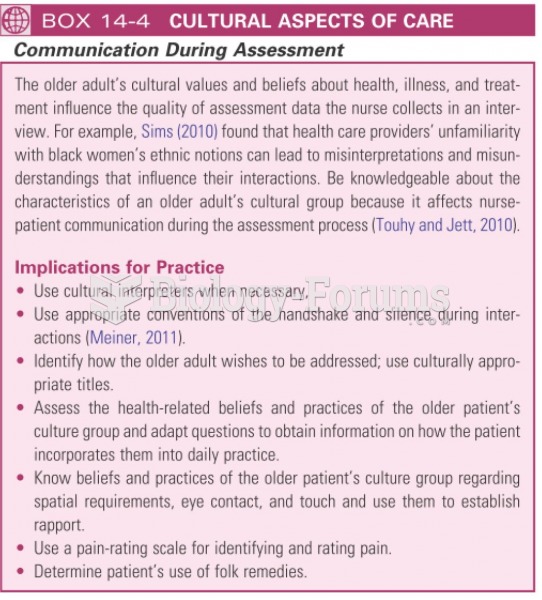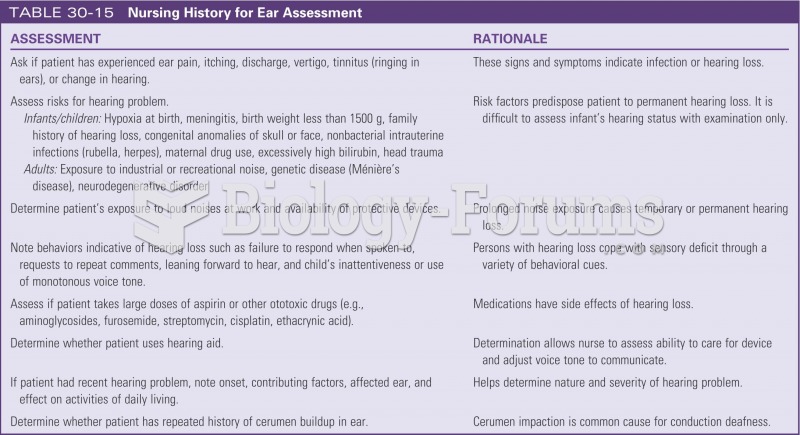Answer to Question 1
Correct Answer: 3, 4, 5
Evidence of altered carbohydrate metabolism includes polyuria, polydipsia, and hyperglycemia. The average urine output in 1 hour is 30 to 50 mL; a urine output of 250 mL in 1 hour would be polyuria. An oral intake of 2 L of water in 90 minutes would indicate polydipsia, or extreme thirst. Blood glucose greater than 110 mg/dL is evidence of hyperglycemia. Striae are caused by increased protein breakdown with loss of collagen and connective tissues in skin and subcutaneous tissues. Fat pads on the upper back are caused by altered fat metabolism with increased breakdown of fats to fatty acids and redistribution of body fat.
Answer to Question 2
Correct Answer: 1, 2, 4, 5
The nurse should teach the patient to sit and stand slowly, and provide assistance as necessary. Extracellular fluid volume deficit causes orthostatic hypotension, dizziness, and possible loss of consciousness. These manifestations increase the risk of injury from falls. A drop in aldosterone levels can reduce renal excretion of potassium, leading to increased blood levels and the potential for cardiac dysrhythmias. The nurse should weigh the patient daily at the same time and in the same clothing because dehydration is manifested by weight loss. The nurse should encourage an oral fluid intake of 3,000 mL/day and an increased salt intake. Cortisol deficiency increases fluid loss, leading to extracellular fluid volume depletion. Oral fluid replacement is necessary to balance this loss. An increase in dietary sodium can reduce the hyponatremia characteristic of adrenal insufficiency. Turning and repositioning would be beneficial to maintain skin integrity, not to address a fluid imbalance.







